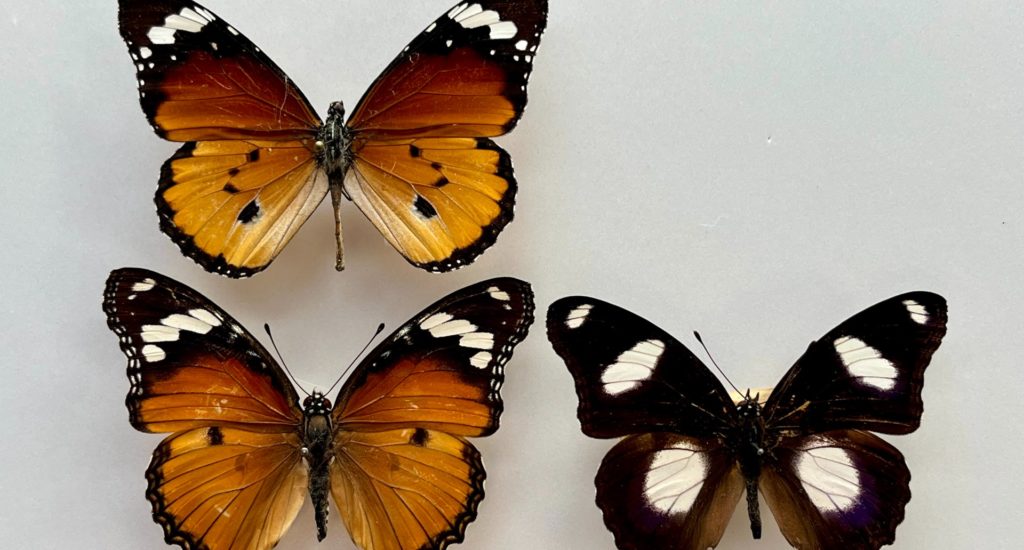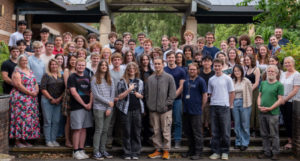Scientists discover how Diadem butterfly mimics African Queen

The female Diadem (bottom left) mimics the African Queen (top left). The male Diadem (right) keeps a distinct pattern to attract mates
Scientists have discovered how female Diadem butterflies have evolved to look like African Queen butterflies to repel predators.
African Queens are toxic, making them poor food for predators such as birds.
Diadems are actually good prey for birds – but they have evolved colours and patterns that closely match those of African Queens, making them appear toxic.
The new study – by a team including the universities of Exeter, Edinburgh and Cambridge, and Mpala Research Centre in Kenya – found that, surprisingly, different genes control these patterns in the two species.
“Since the time of Darwin, Wallace and Bates, people have wondered how different butterflies have evolved to appear the same – and now we know,” said Professor Richard ffrench-Constant, from the Centre for Ecology and Conservation on Exeter’s Penryn Campus in Cornwall.
“Our findings present a compelling instance of convergent evolution, whereby species independently evolve similar traits.
“We also find evidence of adaptive atavism in the Diadem – when a species reverts to a state found in its ancestors.
“In this case, Diadem butterflies have re-evolved an ancestral wing pattern and repurposed it to mimic the Africa Queen, providing a major advance in our understanding of how tasty species mimic those that are toxic.”
Different patterns are found on African Queen butterflies in north, east, south and west Africa – and the patterns on female Diadem butterflies in each area match these.
In contrast, male Diadems have distinctive dark wings with large white patches – possibly because the need to be recognised by the female outweighs the need to hide.
“This is amazing, as the males and females look like totally different butterflies, even though they share the same genome,” said Dr Dino Martins, who was the director of Mpala at the time all the butterflies were collected.
The study used “haplotagging”, a linked-read sequencing technology, and a new analytical tool called Wrath to study the genomes of multiple butterflies from the two different species.
“These new techniques can give us unique insights into the molecular population genetics of this fascinating example of Batesian mimicry,” said Dr Simon Martin, from the University of Edinburgh, one of the coauthors on the study.
Among the different funders was a Discovery Grant from the National Geographic Society, showing how blue skies research into butterflies can fundamentally change our understanding of evolution.
The paper, published in the journal Molecular Biology and Evolution, is entitled: “Transposable element insertions are associated with Batesian mimicry in the pantropical butterfly Hypolimnas misippus.”



